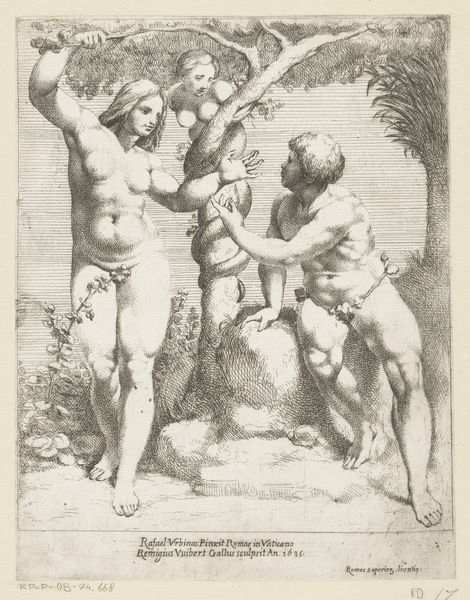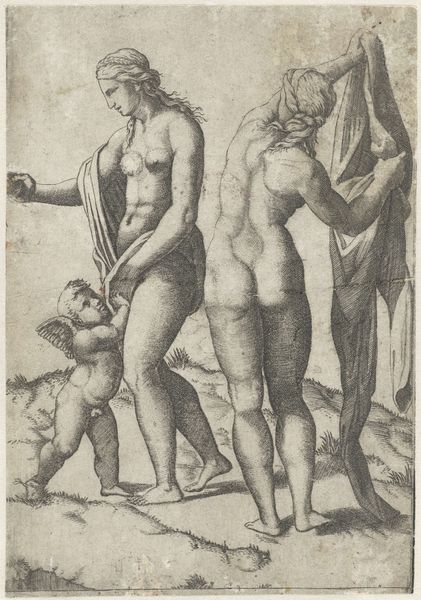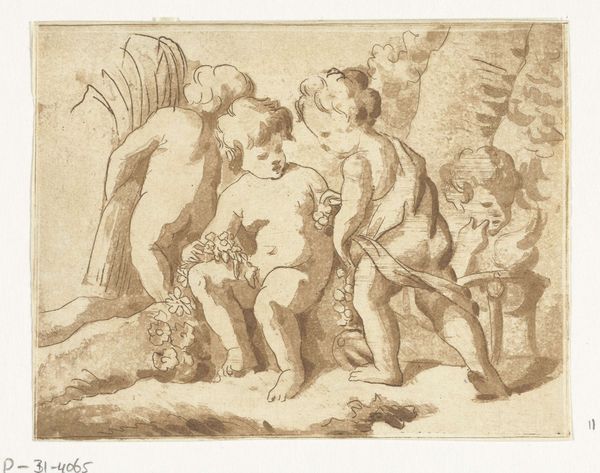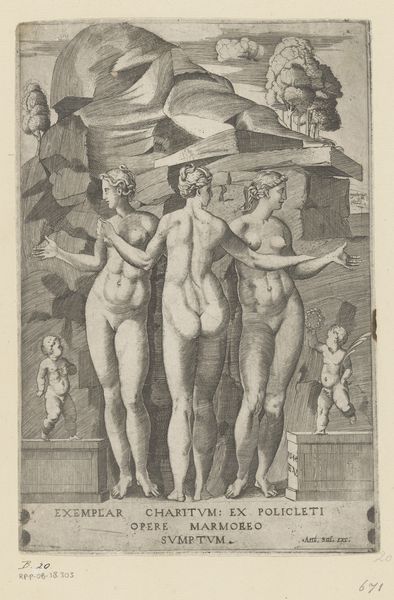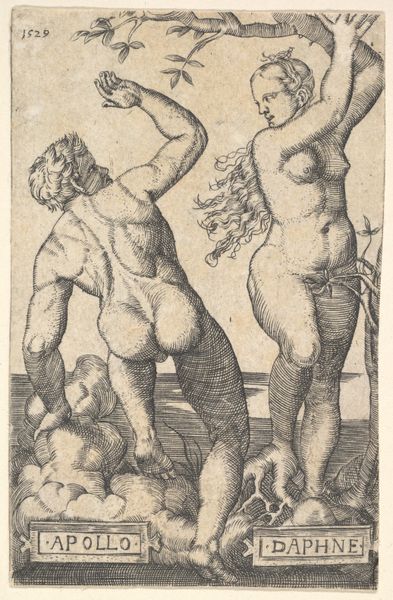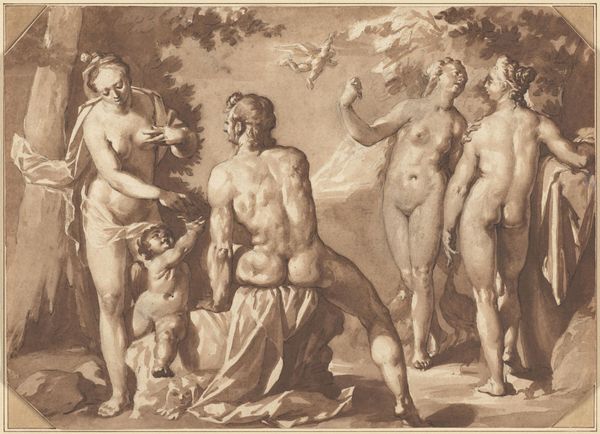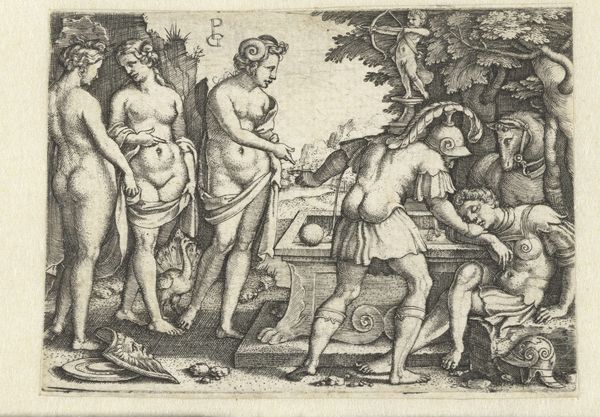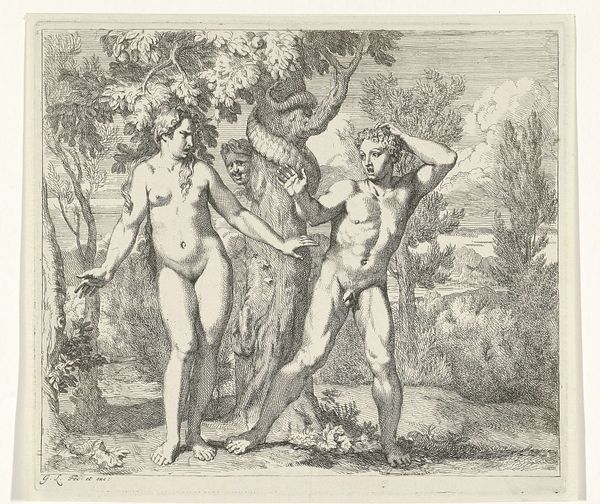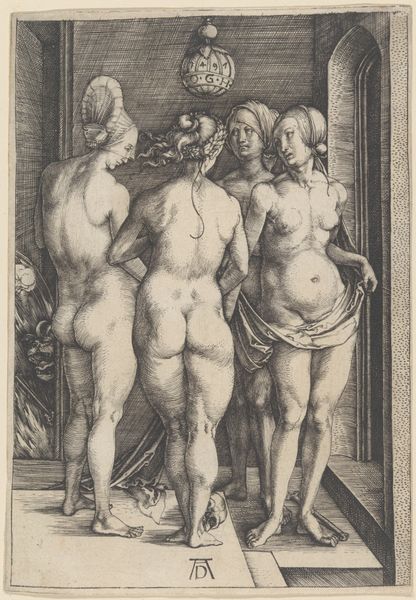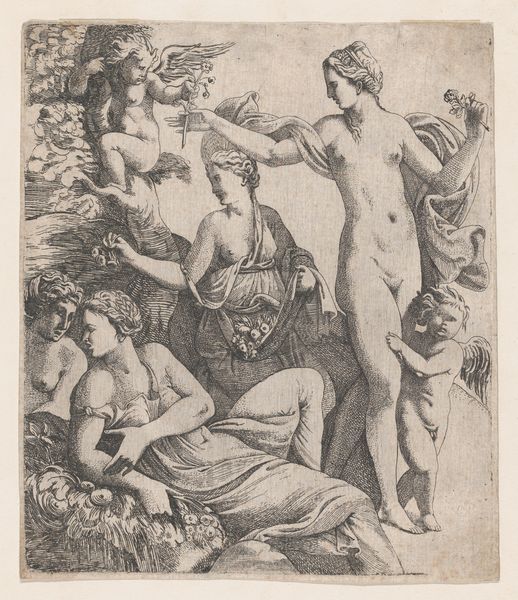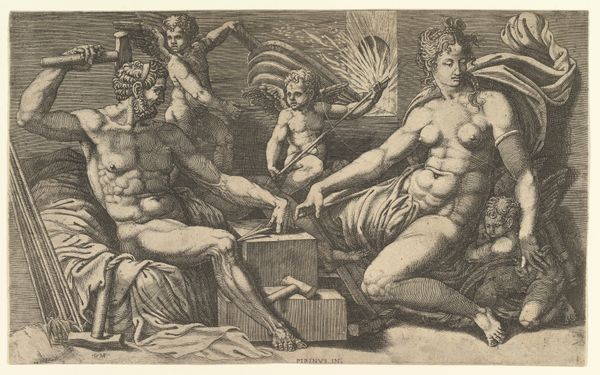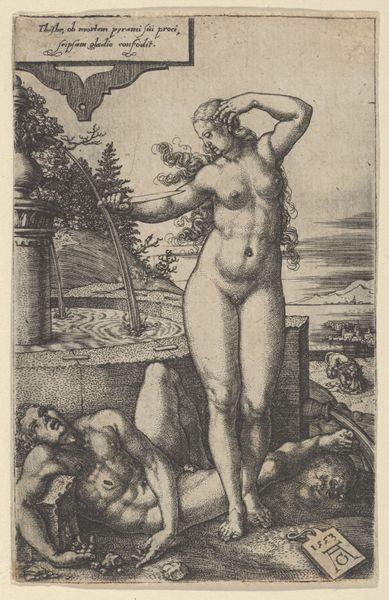
The Three Fates: Clotho, Lachesis and Atropos 1587 - 1591
0:00
0:00
drawing, print, engraving
#
drawing
# print
#
mannerism
#
figuration
#
11_renaissance
#
female-nude
#
history-painting
#
engraving
Dimensions: 30.0 x 25.0 cm
Copyright: Public Domain
Editor: Here we have Jan Muller’s engraving, "The Three Fates: Clotho, Lachesis and Atropos," from sometime between 1587 and 1591. There’s something unsettling about it. The figures seem to be presented without any romanticization, quite frankly rather confrontational. What do you see in this piece, from a historical perspective? Curator: It’s precisely that unsettling feeling that makes this engraving so compelling! Muller is working in the Mannerist style, which deliberately departs from Renaissance ideals of beauty and harmony. It disrupts conventional notions of femininity. Instead of idealizing, Muller presents powerful women who control destiny, life, and death. These Fates were a reflection of the social norms of their time – women confined to reproduction – yet the Fates hold considerable authority. How does that read for you? Editor: That's a sharp contrast. It makes me think about the period's anxieties around women's roles – were they venerated or controlled? The exaggerated musculature of the figures and their positioning adds a layer of complexity to that tension, right? Curator: Exactly! And consider the historical context. The late 16th century was a time of immense social and religious upheaval, including the Protestant Reformation. These visual depictions, combined with text below it that reinforces the importance of choice of life and death. Do you see echoes of that turmoil? The deliberate contravention of norms? The piece can be interpreted as a reflection on power structures and mortality within these shifting social contexts. Editor: That is a powerful reading of it. I can now understand why it seemed so unsettling initially. It speaks volumes about how women were both deified and repressed, wielding ultimate power yet subjugated in their era. Curator: And that interplay is why engaging with the historical and social contexts of art enriches our understanding of both the work and ourselves.
Comments
No comments
Be the first to comment and join the conversation on the ultimate creative platform.

